You’ve seen them at many special occasions: birthdays, weddings, graduations, anniversary celebrations, and baby showers. You may have even spotted them cheerfully blooming in your neighbour’s vibrant garden. Gerberas are stunning flowers, famous for their bright and colourful flowers that look exquisite in almost every arrangement. They compliment other flowers remarkably and liven up spaces with their sunny disposition.
And, given their additional traits of a long vase life and the availability of numerous cultivars, it is no surprise that Gerberas are the fifth most popular cut flower in the world.
By now, you may be wondering how to grow your own gerberas. This guide will take you through all the steps in detail and, by the end of it, you’ll know how to plant, care for, and grow your very own gerberas.
Appearance and Traits of Gerberas
Gerberas are known and loved for the diversity of their flower colours. Other than that, however, they are remarkably similar in most other aspects, including height, width, and structure. This is one of the many things that make them ideal as cut flowers because they bring balance and uniformity to arrangements.
Plant size
Most gerberas typically grow to an average height of 45 cm, unless they are dwarf varieties, which only reach about 15cm to 30cm. There are three kinds of gerberas – mini, standard, and specialty – which differ in terms of flower head size. The head of mini gerberas usually ranges between 6cm to 8cm in diameter, while that of standard gerberas is 10 cm to 13 cm. The specialty variety tends to be the largest, measuring up to 15 cm or more.
Flower shape
While, at first glance, it may appear that gerbera flowers are all the same shape, they in fact fall into two distinct categories: spider and pomponi. Spider-shaped flowers have thinner and fewer petals that have pointed ends and are more sparsely arranged, while the petals in the pomponi shape are tightly packed together to form a thick, full flower head – looking very much like a cheerleader’s pompom.
Additionally, the petals can also be in either a single or double row. Pomponi shapes tend to have two or more rows or layers of petals, while spider-shaped petals usually come only in single rows.

You can grow Gerberas from seeds, root division, cuttings, or seedlings. Each method has its advantages and disadvantages. Let’s take a look at the different options in a little more detail.
Growing gerberas from seeds
When you grow a gerbera from seeds, you have greater flexibility in choosing the variety and colour that you want. That is if you purchase the seeds from a flower shop. Some of the more hands-on gardeners prefer to harvest their own seeds from flowering gerberas, which is a longer and more technical process that involves first leaving the flower to completely dry on the stem, separating the seeds, correctly identifying the fertile seeds from the infertile ones, and so on.
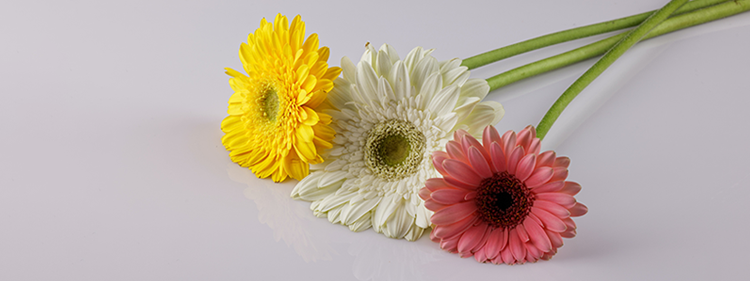
Using shop-bought seeds involves fewer steps and generally has a higher chance of success. However, whether you harvest or buy the seeds, you need to make sure that you don’t store them for too long otherwise they lose their viability. In fact, some horticulturalists recommend sowing shop-bought seeds immediately after removing them from their packets.
Before planting, you will need to prepare the seed tray, compost, and soil, which should have a pH that is either slightly acidic or neutral. Fill the seed tray cells with a mixture of four parts soil to one part compost, and then use a toothpick to poke one or two small holes, about 1 cm deep, in the mix in each tray cell.
Next, drop one seed in each hole and then cover it up with the soil. Seed germination is also enhanced when temperatures are constant and range between 21°C and 23°C. Therefore, you can choose to cover your seed tray with plastic wrap to keep the seeds warm, maintain a steady temperature, and retain soil moisture.
Tips
The main disadvantage of growing gerbera from seeds is that it takes the longest for the plant to grow. It may take about three weeks before the seeds begin to germinate and its flowers can take another three to four months to bloom.
Once you spot at least four leaves sprouting, however, you can remove the plastic wrap and then transplant the seedlings to larger plant pots or outdoors if you wish. If you want to transplant your gerberas outdoors, the best time to do this is in early spring, as they do not tolerate frost well.
Growing gerberas by root division
Although it produces results faster and isn’t as finicky as using seeds, growing gerberas via root division does require a bit of time and effort.
Keen gardeners also use the root division method to thin their gerbera about once every one to two years to prevent the plant’s crown from rotting. The crown is where the plant’s stem and roots meet and, over time, as the plant grows, the crown sinks lower into the soil from the weight. If the plant is not reduced in size, the crown will eventually rot from excess moisture and the plant will die.
Therefore, root division is a useful method to know to make sure that your gerberas grow strong and healthy for longer. If you live in a tropical climate or a place where it is warm all year round, you can divide the roots at any time of the year; but if you are in a cooler area that gets frost at night, the best time to use this process is in the spring or summer time.
How to action it
You will need to remove the gerbera from its pot. Alternatively, if growing it in the ground, dig it up with a garden spade. Brush away all the soil so that you have a clear view of the roots. Next, using your hands, gently separate clusters of 4 to 5 stems from the main plant. Until the main plant is the same size as the other clusters. Make sure each cluster has at least one crown.
Remove all flowers, buds, browning leaves, and dead roots that are growing on the clusters. To be able to clearly identify the dead roots, clean the roots further in water to remove all the dirt. Dead roots are black in colour, while healthy roots are light brownish-white.
After that, replant the clusters in a separate pot. Making sure that the crown is above the soil and water it.
Growing gerberas from cuttings
Propagating gerberas from cuttings is a very straightforward procedure. You will need a healthy, established gerbera plant. From which you will cut a stem of about 15 to 20 cm in length. Pick a thick, strong-looking stem and try not to exceed that length otherwise you risk harming the mother plant.
Remove any flowers or buds growing on the cutting so that the plant can focus only on growing its roots. Also, remove all the leaves on the lower half of the cutting that may come into contact with the soil as this may encourage them to rot.
After preparing a pot with healthy soil and compost, plant your cutting in the pot and lightly water the soil. Some gardeners suggest dipping the cutting in rooting hormone before planting it, while others believe that this is not necessary as cuttings already naturally contain it. Depending on whether or not you prefer to use chemicals on your plants, you can decide if you want to skip this step or not.
For best results, place the pot in a warm area where it receives lots of indirect sunlight and continue to lightly wet the soil every day. The cutting should grow roots after 10 to 14 days. You can check this by very gently tugging on it and if you feel some resistance then that means that the roots have sprouted.
Growing gerberas from seedlings
This is probably the easiest method to grow your own gerbera as the planting has already been done for you.
Before buying the gerbera from the garden centre, check the leaves to make sure that they are a healthy, deep green and also the undersides of the foliage for any indications of insects.
Once you bring your seedlings home, place them in an area where they receive lots of bright, indirect light and water them lightly to keep the soil moist, but not wet.
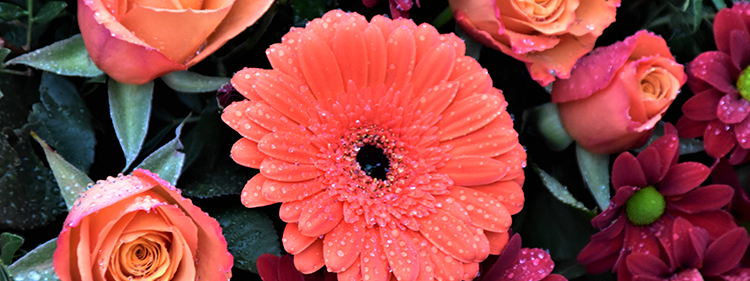
Ideal Climate for Growing Gerberas
Gerberas are sun-loving plants that thrive in warm climates. They are very weather sensitive and do not tolerate cold or very hot temperatures at all. In fact, weather plays such an essential role in the life of gerberas that it even determines whether they are perennials or annuals.
In colder regions, gerberas are annuals, and therefore they grow, flower, and permanently die within one growing season. But in warmer, tropical climates, it is a perennial – growing back again the following season.
Therefore, if you are planting your gerberas outdoors, choose an area where they will receive the sun in the morning and be in the shade – or protected from direct sun – in the afternoon.
In areas that get frost, the best time to plant gerberas outdoors is in the spring or early summer. In tropical climates, though, you can plant them outdoors any time of the year.
Similarly, planting your gerberas in pots indoors allows you to grow them any time of the year just as long as you maintain a temperature of 21°C and expose them to bright, indirect light. An additional advantage of growing gerberas in pots is that you can easily move them to different spots for the best sun, light, and shade.
Best Soil for Growing Gerberas
Gerberas are pretty selective when it comes to their ideal soil for growth. Avoid planting gerberas in clay soil, which has high porosity and low permeability. `This means that although it can retain lots of water, it drains poorly. For gerberas, this often leads to root rot and possibly crown disease.
Therefore, for your gerberas to survive and thrive when planting them outdoors it is best to plant them in sandy soil that has been mixed with compost and a 5 cm layer of mulch, grass clippings, or sawdust on top. For best results, the pH of the soil should be between 6.1 and 7.2.
Make sure though that the gerbera’s crown isn’t covered or in contact with the soil.
Check the level of the mulch once a year to ensure that the layer remains at 5 cm and top it up when needed.
If you are aware that the soil you have access to isn’t well-draining, plant your gerberas in a raised garden bed or in a pot. In this instance, potted gerberas are easier to care for and experience fewer incidences of root rot than those planted in the ground.
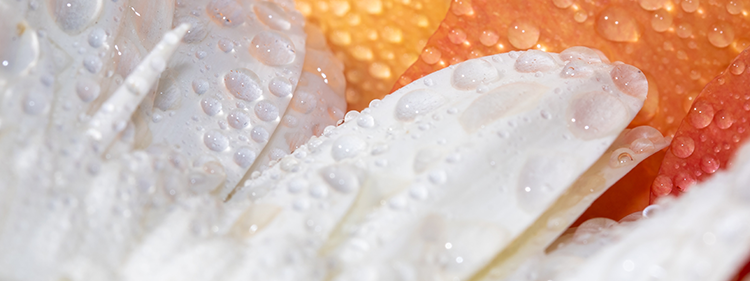
How to Water Gerberas
You need to strike a delicate balance when watering your Gerbera because they will wilt if you overwater or underwater them. However, they’re quite resilient and will bounce back once water levels are adjusted.
Always make sure that the soil is constantly moist, but not wet, throughout most of its life cycle – especially when it is in bloom. It will need more frequent watering while it is flowering; therefore, check the level of water more often during this stage.
When your potted gerbera isn’t flowering, you can water it less often and, in fact, you should only water it once the top 2 cm of the soil becomes dry. You can measure this by inserting a stick to the very bottom of the soil in your pot and then checking the moisture level on the stick.
During the winter, when your gerbera is dormant, reduce the watering even further. Start by watering it only once a month, while regularly checking the soil moisture to make sure that it doesn’t get too dry. Monitor the plant’s response and adjust accordingly. Soil that is too wet can lead to fungal disease, powdery mildew, or root rot.
Do not water its leaves, flowers, or crown, as that will encourage diseases and rot. But you can brush its bountiful foliage with a damp cloth to remove any dust and to keep it looking vivid and vibrant.
To completely avoid this, some gardeners prefer to water their potted gerberas from below by placing the pot in shallow water that is only a few centimetres deep for about 30 minutes and then removing it.
How to Maintain Your Gerberas and Encourage them to Flower
The best way to get your gerberas to produce big, beautiful blooms repeatedly is to remove aging flowers as soon they fade. You do this by pinching and twisting off the stem cleanly at the base of the plant instead of cutting it. This is because gerberas are highly susceptible to fungal disease and using scissors to cut off stems can leave an infection spot on the plant.
For this reason, it is also important to remove all brown and dead leaves or flowers on your gerbera, as they could be potential sources of infection for the plant. Gerberas are blessed with an abundance of leaves, and while this adds to their charm, it means that you may have to monitor more closely than other plants for dried out leaves and stems.

How to Pick Gerberas for Vase Arrangement
When picking gerbera flowers to arrange in a vase, the same method should be applied as when you’re removing dead flowers and stems from the plant, and that is to snap off the stem at the base rather than cutting it off.
Gerberas are known and loved for their long vase life and arrangements can last as long as two weeks after being picked. But there is a secret to the picking process that allows them to last that long, which if not followed may lead to them lasting only a few days in a vase.
Before picking the flower, check the number of rows of yellow stamens at its centre. If it has two or three stamens, it means that it is ready for picking. But if it only has one row, you will need to wait a few more days to pick it so that it can last longer in the vase.
Another tip for extending gerberas’ vase life, which is probably applicable for most other flowers, is to slightly trim the bottom of the stems before placing them in the vase to allow them to absorb water more easily.
Preparing the vase
Make sure you wash your vase with hot water. You can also add a cap full of vinegar to boot to get rid of any harmful bacteria. Letting the vase air dry first by placing it upside down. Instead of drying it with a towel, also helps to prevent bacterial contamination.
Additionally, since gerberas have soft stems, they have lower water requirements when placed in a vase. As opposed to flowers with thicker stems like roses. Therefore, you only need to fill the vase only halfway or a little less with water. Tap water is perfectly fine, there’s no need to use distilled or filtered water. But make sure that the water is neither hot nor cold. Rather room temperature as plants have an easier time absorbing it. Therefore, you can let the water sit for a while in the vase before putting in the cut flowers.
Maintaining cut flowers in a vase
Regularly check the level and colour of the water in your vase. It will probably be easier to do this if you use a clear glass vase. Rather than a coloured or opaque one. If you notice that the water has become cloudy, change the water immediately. Wash the vase thoroughly with hot water and a cap full of vinegar, before putting the flowers back in.
If you see that water levels have fallen, but the water is still clear, all you have to do is just top it up with room temperature water and you’re good to go. In both cases though, you may want to snip off about 2.5 cm from the bottom of the stem. Just to refresh its water intake abilities and to get rid of any potential blockages in the stem.
Gerbera Species that Will be Successful Locally
There are over 70 different gerbera species in the world. The weather across most parts of Australia is perfect for growing the majority of them. Today, we also have thousands of different gerbera cultivars. Available in a myriad of colours. Which is the result of the cross between only two species: the Gerbera Jamesonii and Gerbera Viridifolia.
The crossbreed of the Gerbera Jamesonii and Viridifolia is known as the Gerbera Hybrida. Its flowers and stems are more resilient than those of the original species. The new cultivars also come in a wider variety of colours, which range from white to yellow, orange, pink, red, and burgundy. There are also bi-coloured flowers and some gerbera petals have a single row and others double rows.
Below are some of the gerbera species that will grow successful locally.
Gerbera jamesonii

The gerbera jamesonii is the most well-known of the gerbera species. It is normally the plant that most people refer to when talking about gerberas. It is native to South Africa and its common name is the Barberton Daisy or the Transvaal Daisy. Although it predominantly bears striking red flowers grow that grow in double rows. It is also known to have cream, orange, and pink blooms as well.
Gerbera viridifolia

One of the more ubiquitous species, the Gerbera Viridifolia is found across most countries in Southern, Central, and Eastern Africa. It produces blooms that can either be cream or pinkish-purple coloured, depending on the area it is found.
The gerberas in Eastern and Central Africa tend to be white. While those in Southern Africa are often various shades of purple. Found in open grasslands and savannas in nature, the flowers of the Gerbera Viridifolia typically come out in the springtime.
Gerbera serrata
Named after the shape of its leaves. Which have serrated edges, this species is found across the Eastern and Western Cape Province in South Africa. Its flowers are often white or pink with traces of white and it blooms in the springtime. Gerbera serrata grows up to 20 cm and prefers hilltops and grasslands.
Gerbera aurantiaca
Giving the Gerbera Jamesonii a run for its money in the category of eye-catching blooms is the gerbera aurantiaca. Also known as the Hilton Daisy, this plant commonly produces bright red flowers. On occasion, also yellow and orange ones. It appears that this species was first observed scientifically in an area where its flowers were orange. Because aurantiaca means ‘orange’ in Latin.
Endemic to the KwaZulu-Natal grasslands, one of the downsides of the gerbera aurantiaca’s attractiveness. However, is that it is now rare and endangered in the wild.
Gerbera galpinii
Gerberas prefer well-draining soil and do not like too much water. The gerbera galpinii is unusual in that it is mostly found in marshland. However, perhaps to make up for preferring somewhat inhospitable conditions, they produce some of the most beautiful flowers. Light pink with a deep purple centre, their blooms certainly stand out in their environment. The gerbera galpinii is mostly found in Swaziland in an area called Mpumalanga.
Gerbera ambigua
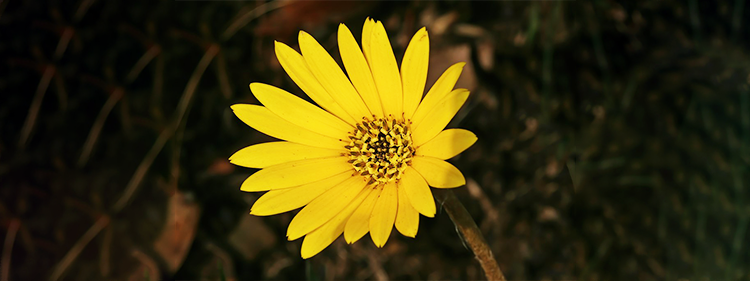
This species produces only white and yellow flowers. Which come in three forms: with a dark centre, with a pale centre, and fully yellow petals and centre. It is found across Southern Africa, from South Africa, Lesotho, and Zimbabwe to Angola, Malawi, DRC, and Tanzania.
It flowers throughout the year can grow in a wide range of environments, including marshy ground, woodlands, and savannas.
Gerbera tomentosa
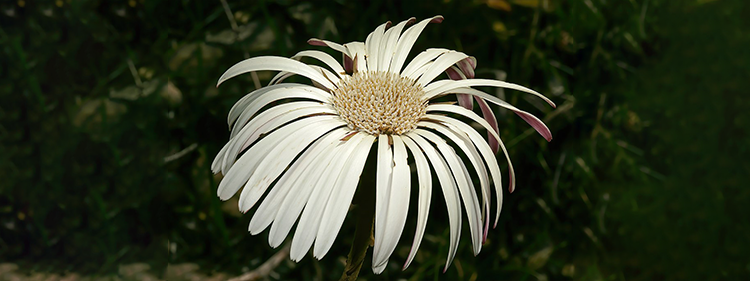
The gerbera tomentosa blooms almost all year round, except in winter. It commonly bears white flowers, some with hints of pink stripes. Its petals tend to grow a little longer than the average gerbera’s, leading to them occasionally giving into gravity and bending backwards at the ends. It is endemic to South Africa where it grows on mountainsides.
Gerbera delavayi
This plant is one of only about four gerbera species that are native to China. It grows in forests and mountain slopes. It produces a variety of different coloured flowers that can be in either single or double rows.
Gerbera crocea
The flowers of this gerbera crocea seem to run the whole gamut of the colour spectrum. From white and yellow, to pink, magenta, purple, and maroon. Its home is the Cape Peninsula in South Africa and it typically blooms throughout the spring to summer months.
But if you don’t want to grow your own gerberas, you can buy your ready-cut gerberas from us. We have beautiful, large pink gerberas that make the perfect “just-because” gift for a friend or family member. They are guaranteed good mood boosters!
Our bouquet of exquisite white gerberas can brighten up any room. They are great additions to interior spaces as elegant centrepieces. Their versatility makes them also perfect for pretty much any occasion, including celebrating yourself.
To put a smile on anyone’s face, go for our multi-coloured bouquet. It is like a vibrant ray of sunshine. They are the perfect gift if you want to make someone’s day. Alternatively, to let a special someone know that you’re thinking of them. You can choose between standard, deluxe, or premium bouquet sizes and also pick your very own colour combinations.
We include the option of arranging the bouquets in a vase for you. If you’d like to beautiful the display even further and we guarantee same-day delivery.
FAQ About Gerberas
Are gerberas poisonous?
Adding to the long list of gerberas’ advantages is the fact that they are not toxic to children or pets. In fact, in different parts of the world, gerberas are used as medicine. Chinese use the leaves and roots of the gerbera. Piloselloides are used to make a remedy for the common cold, coughs, and rheumatism. In South Africa, healers in the Zulu community use the leaves of the gerbera ambigua to treat tapeworm and stomach aches, and they make tonics for coughs from the roots.
Are gerberas susceptible to pests or diseases?
If you carefully water your gerberas without exposing their leaves or crown to water and you also make sure to divide their roots every year or two to reduce plant size, your gerberas really shouldn’t experience any disease problem – especially if it is potted. Too much water in the soil or on the leaves and limited airflow can lead to powdery mildew and grey mould, which cause root and crown rot.
Apart from that, gerberas are also known to fall victim to pests such as whiteflies, spider mites, and aphids. These bugs suck the sap from the plant’s leaves, causing them to turn yellow and shrivel. They can usually be swiftly dealt with by spraying neem oil or a soap solution on the affected leaves, both on the top surface and the underside, to get rid of them. However, do not use these treatments in the afternoon sun or when temperatures are above 30°C as it may be damaging to the plants.
Another way of getting rid of these pests is by attracting beneficial bugs such as ladybugs and lacewing. So do not chase them away when you see them on your plants.
Closing
Gerberas are resilient, easy-to-grow plants. The only things you need to keep a close eye on are watering and temperature exposure. If you over-water or under-water them, they will rot or dry out. Respectively prolonged exposure to cold temperatures or direct heat may permanently damage them.
Should you choose to plant them from scratch, using either shop-bought or self-harvested seeds. It may initially involve a bit of work but the rewards are definitely worth it. Not only are gerberas’ colourful flowers a joy to behold, but there are also numerous cultivars available. Almost all of them have a remarkably long vase life.
Visit Flowers Across Sydney today to buy the freshest cut flowers and have them delivered on the same day.



No Comments